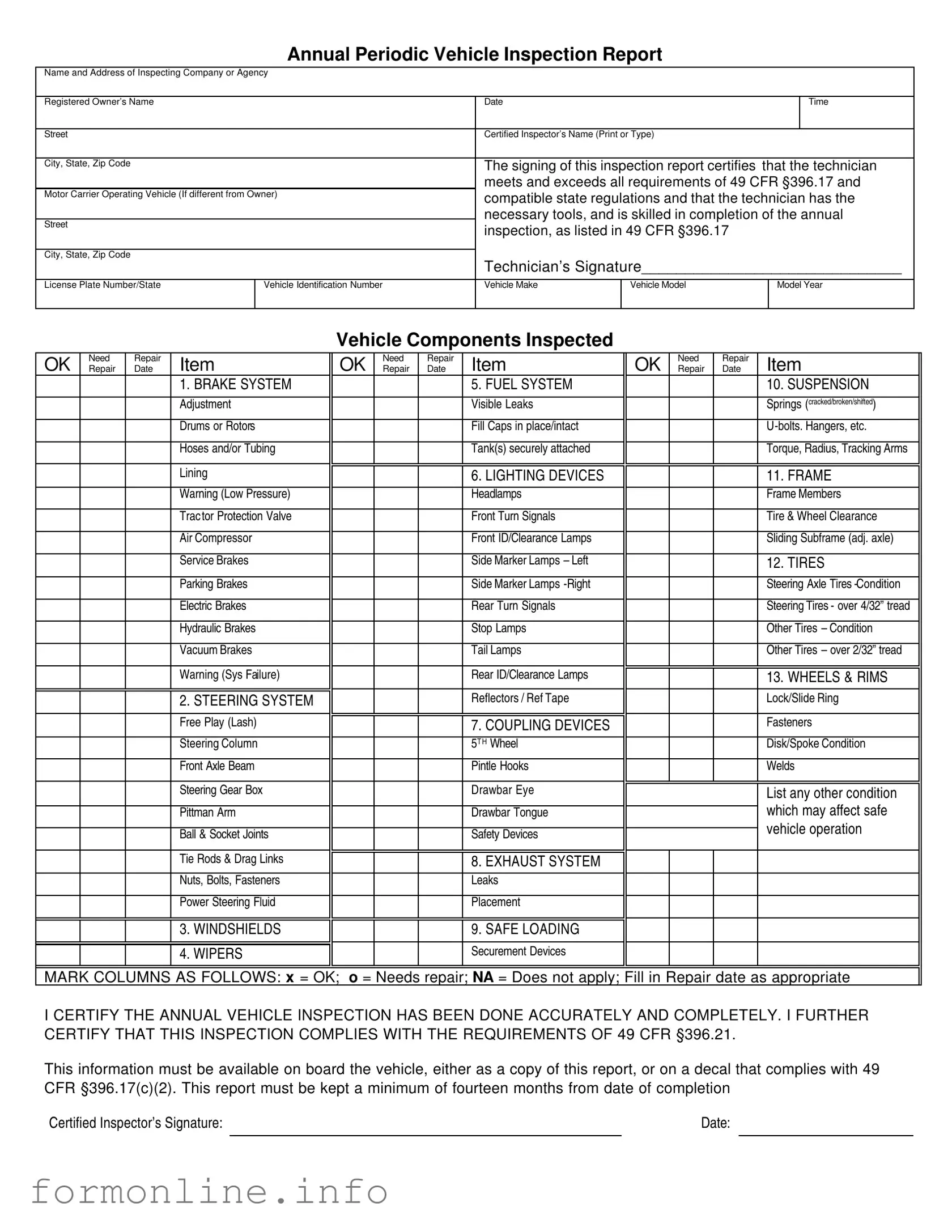BRAKE INSPECTOR QUALIFICATIONS
Certification — 49 CPR §396.25
“Brake Inspector” means any employee of a motor carrier who is responsible for ensuring all brake inspections, maintenance, service, or repairs to any commercial motor vehicle, subject to the motor carrier’s control, meet the applicable Federal standards.
No motor carrier shall require or permit any employee who does not meet minimum brake inspector qualifications to be responsible for the inspection, maintenance, service or repairs of any brakes on its commercial motor vehicles.
Minimum Qualifications
•Understands and can perform brake service and inspection
•Is knowledgeable of and has mastered the methods, procedures, tools and equipment necessary to perform brake service and inspection
•Is capable of performing brake service or inspection by reason of experience, training, or both, and qualifies in one of the following categories (check all that apply):
I.___Has successfully completed an apprenticeship program sponsored or approved
by a State, Canadian Province, a Federal agency or labor union, or has a certificate from a State or Canadian Province which qualifies the person to perform brake service or inspections.
Specify: ________________________________________________________________
II.___ Has brake-related training or experience or a combination thereof totaling at least one year as follows (check all that apply):
a.___Participation in a brake maintenance or inspection training program sponsored by a brake or vehicle manufacturer or similar commercial training program.
Where and Date:_______________________________________________
b.___ (years) experience performing brake maintenance or inspection in a motor carrier maintenance program.
Name and Date:_______________________________________________
c.___ (years) experience performing brake maintenance or inspection at a commercial garage, fleet leasing company, or similar facility.
Name of Facility and Dates:______________________________________
I certify the above information is true and accurate to the best of my knowledge.
Employee ______________________________________ |
________________ |
Signature of Mechanic/Inspector |
Date |
Motor Carrier/Company ____________________________________ |
________________ |
Signature of Employer/Supervisor |
Date |

